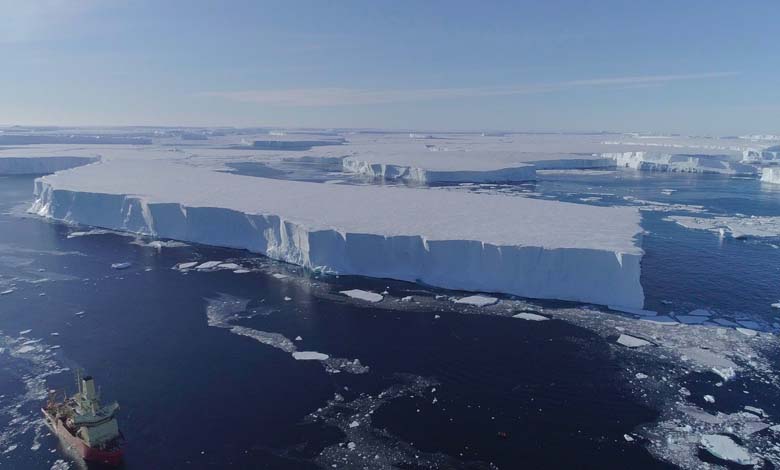Disturbing Discovery: The “Doomsday Glacier” is Heading Towards Collapse

Scientists studying the Thwaites Glacier in Antarctica, also known as the “Doomsday Glacier,” have reported a disturbing discovery indicating an acceleration in its melting.
-
Mont Blanc Mountain: Europe’s tallest peak is decreasing, and here’s why
-
High in the Alps… Discovery of Remains of a Man Who Died 22 Years Ago
According to a CNN report, this glacier, one of the largest in the world, may be on an irreversible path toward collapse, which could lead to a significant rise in sea levels.
Studies show that ice loss from the Thwaites Glacier is accelerating. Marine geophysicist Rob Larter from the British Antarctic Survey warned that its retreat has markedly increased over the past thirty years.
-
The Hottest Eight Years on Record: The Impact of Climate Change
-
The world is whistling into the abyss
The glacier and its ice sheet are expected to collapse within the next two hundred years, which could raise sea levels by about 10 feet, threatening coastal cities such as Miami and London.
The geography of the glacier, equivalent in size to the state of Florida, makes it vulnerable, as the land beneath the ice slopes downward, exposing it to warmer waters.
-
France – Several departments placed on drought alert
-
The “Ocean Acidification” Crisis Threatens Earth’s Habitability
Over the past six years, researchers have conducted multiple experiments to understand the phenomenon, including the use of the “Icefin” robot to explore the glacier’s grounding line, revealing unexpected melting patterns.
A team led by Julia Wellner from the University of Houston found that the glacier began retreating in the 1940s, possibly due to the El Niño phenomenon.
Despite some positive information about the potential to slow the chain reaction of snow collapse, the overall outlook remains concerning. Scientists expect the Thwaites Glacier to disappear by the 23rd century, highlighting the need for further research to understand this complex glacier.












